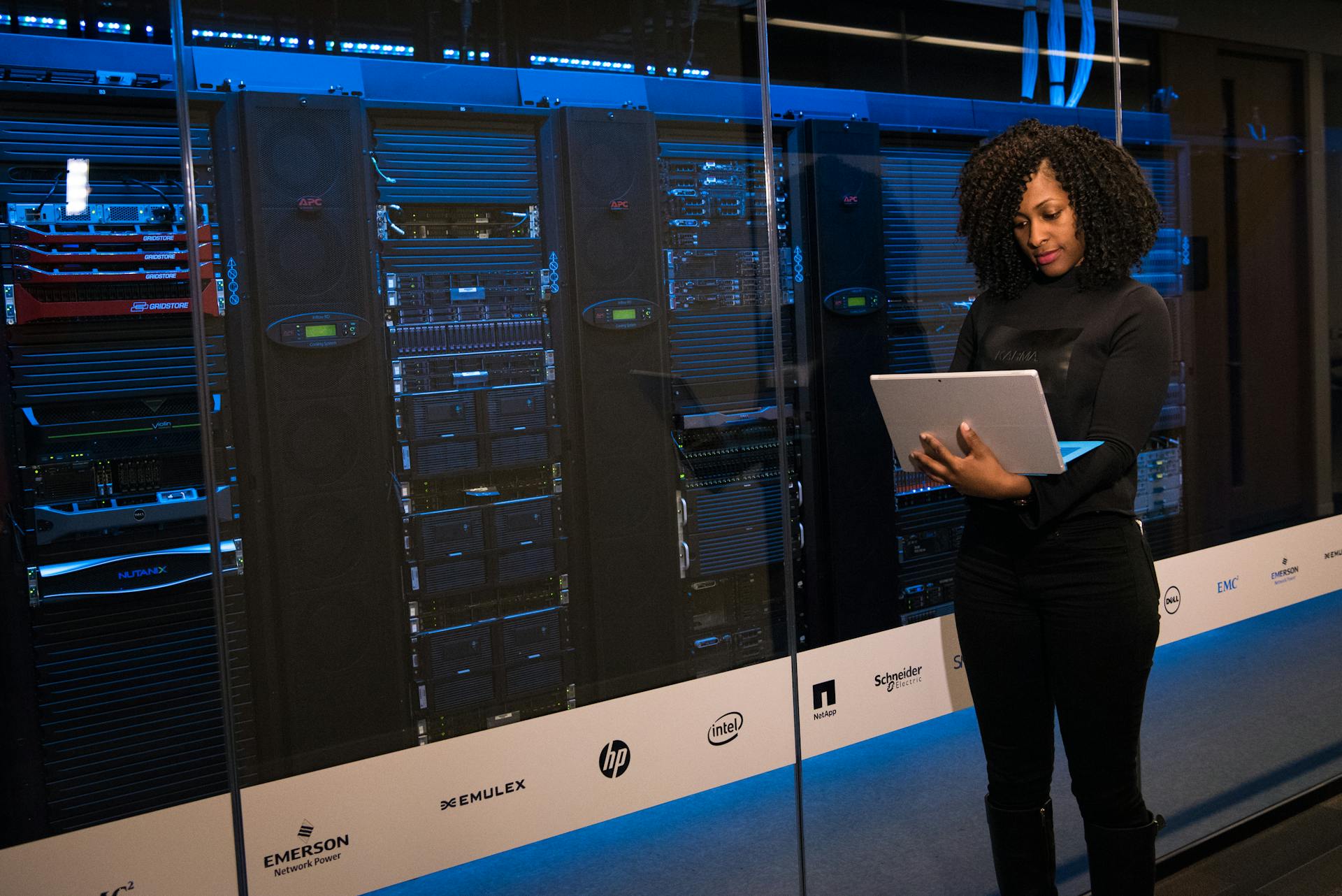
The demand for AI is skyrocketing, but it's facing a critical challenge: a shortage of training data. According to a recent study, the amount of available training data is not growing as fast as the demand for AI.
The lack of quality training data is hindering the development of more advanced AI models. For instance, a researcher at a leading tech firm found that their AI model's accuracy improved by 20% when it was trained on a larger dataset.
As AI becomes more pervasive, the need for high-quality training data is becoming increasingly pressing. However, the cost and time required to collect and label large datasets are significant barriers to progress.
Training Data Shortage
The training data shortage is a significant challenge in the field of artificial intelligence. This is because the more data an AI model is trained on, the better it can perform.
The amount of data required for AI models to learn and improve is staggering, with some models needing tens of thousands of hours of data to reach optimal performance.
Related reading: Ai Training Models
One example of this is the development of language translation models, which require access to vast amounts of text data in multiple languages. The lack of high-quality text data in certain languages can hinder the development of accurate translation models.
The cost and time required to collect and label large datasets can be prohibitively expensive and time-consuming. This can make it difficult for researchers and developers to access the data they need to train their models.
The consequences of a training data shortage can be severe, including inaccurate predictions, poor decision-making, and even system failures.
For another approach, see: Ai for Training and Development
Future of AI Training
Training AI models requires an enormous amount of data, with 570 gigabytes of text data needed to train a large language model like ChatGPT.
The effectiveness of AI systems is fueled by data, as Atanu Biswas, a Professor at the Indian Statistical Institute in Kolkata, points out.
To put that in perspective, ChatGPT's training data consisted of about 300 billion words.
AI image generators are even hungrier, requiring over 5.8 billion image-text pairs to generate images.
These generative AI models learn by intaking an almost unfathomable amount of data then using statistical probability to create results based on observable patterns in that data.
What you put in defines what you get out, as the quality of the training data directly impacts the AI's performance.
Popular solutions to the AI training data problem include smaller language models and synthetic data created specifically to train AIs.
One potential solution involves using actors to portray emotions on camera, earning them $150 per hour, and then using the captured footage to aid in AI training.
Suggestion: Ai Image Training
New Developments in AI
As AI continues to advance, researchers are exploring new ways to train models without relying on large datasets. Researchers are experimenting with methods like transfer learning and meta-learning to adapt to new situations.
The amount of data available for training AI models is growing exponentially, but it's still not enough to keep up with the pace of innovation. According to a recent study, the size of the average dataset used for training AI models has increased by 50% in the past two years.
Explore further: Ai and Machine Learning Training
Researchers are finding creative ways to generate new data, such as through simulations and synthetic data generation. For example, the article mentions a project that used simulations to generate realistic data for training self-driving cars.
One potential solution to the data shortage is to use transfer learning, which involves training a model on one task and then adapting it to a new task. This approach has shown promising results in areas like natural language processing and image recognition.
The field of AI is rapidly evolving, and new developments are emerging all the time. For instance, a new type of AI model called a "neural network" has been shown to be highly effective in certain tasks.
Despite the challenges posed by the data shortage, researchers remain optimistic about the future of AI. With continued innovation and experimentation, it's likely that new solutions will emerge to address the issue.
For more insights, see: Pre-trained Multi Task Generative Ai Models Are Called
AI Needs Data
AI needs data to function, and a lot of it. The problem is, we're running out of high-quality data to train these models.
Training a large language model like ChatGPT takes around 570 gigabytes of text data, which is roughly 300 billion words. This is because these models learn by intaking a massive amount of data and using statistical probability to create results based on the observable patterns in that data.
The data we do have is often low quality, even dangerous. For example, Microsoft trained an AI bot using Twitter data in 2016, which resulted in outputs tainted with racism and misogyny.
To get around this problem, companies are striking deals with content-filled publications to gain access to their archives. OpenAI has reportedly offered publishers between $1 million to $5 million for such partnerships. They've already entered into deals with publications like the Atlantic, Vox Media, and the Financial Times.
Synthetic data, generated by AI models instead of humans, is another possible solution. OpenAI's Sam Altman believes that as long as we can get over the synthetic data event horizon, where the model is smart enough to make good synthetic data, it should be all right.
However, some prominent AI researchers, like Fei-Fei Li, think fears over an emerging data crisis are overblown. They argue that alternative and pertinent data sources, like the healthcare industry, are yet to be tapped by AI.
Additional reading: Advanced Coders - Ai Training
Sources
- https://interface.media/blog/2024/03/06/big-data-isnt-big-enough-to-train-generative-ai/
- https://www.bigdatawire.com/2024/07/26/are-we-running-out-of-training-data-for-genai/
- https://observer.com/2024/07/ai-training-data-crisis/
- https://www.technologyreview.com/2022/11/24/1063684/we-could-run-out-of-data-to-train-ai-language-programs/
- https://www.nextbigfuture.com/2024/05/ai-needs-data-and-when-will-we-start-running-out-of-data.html
Featured Images: pexels.com


